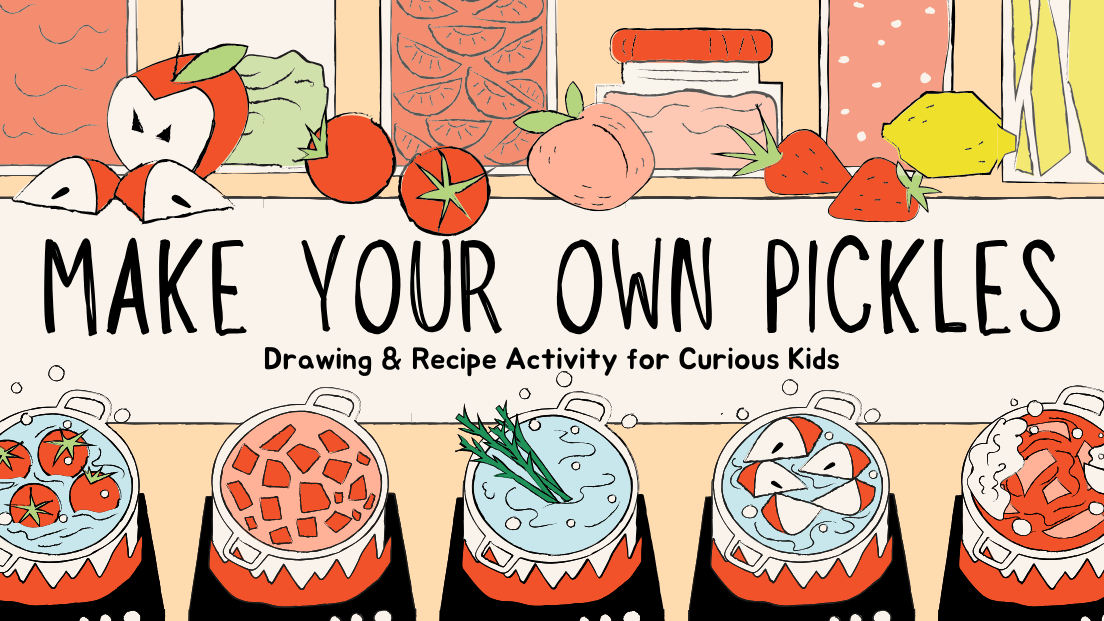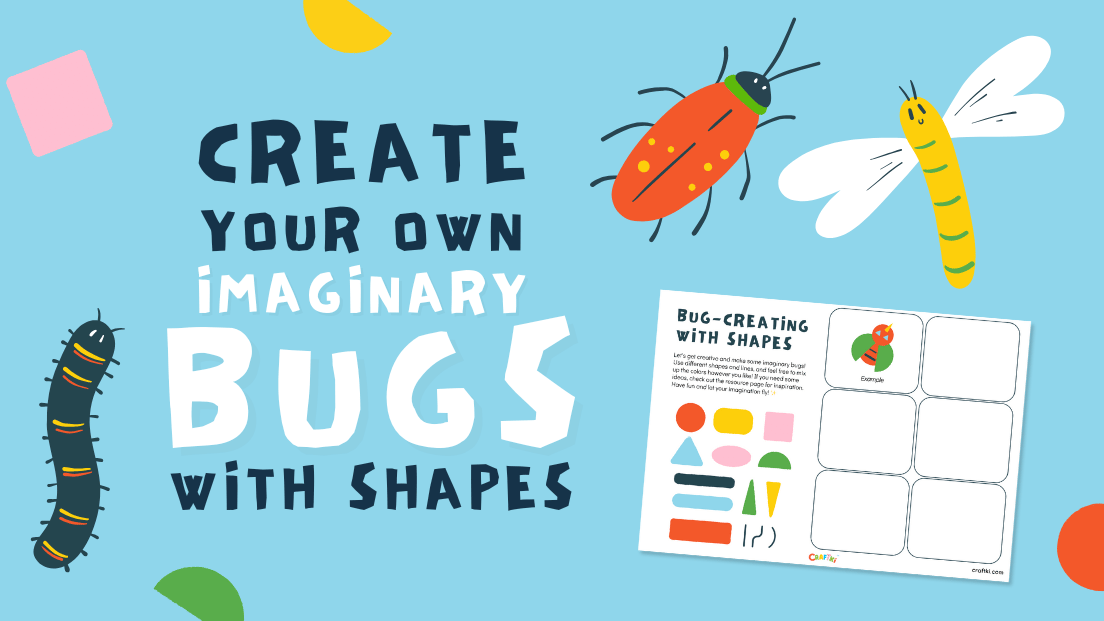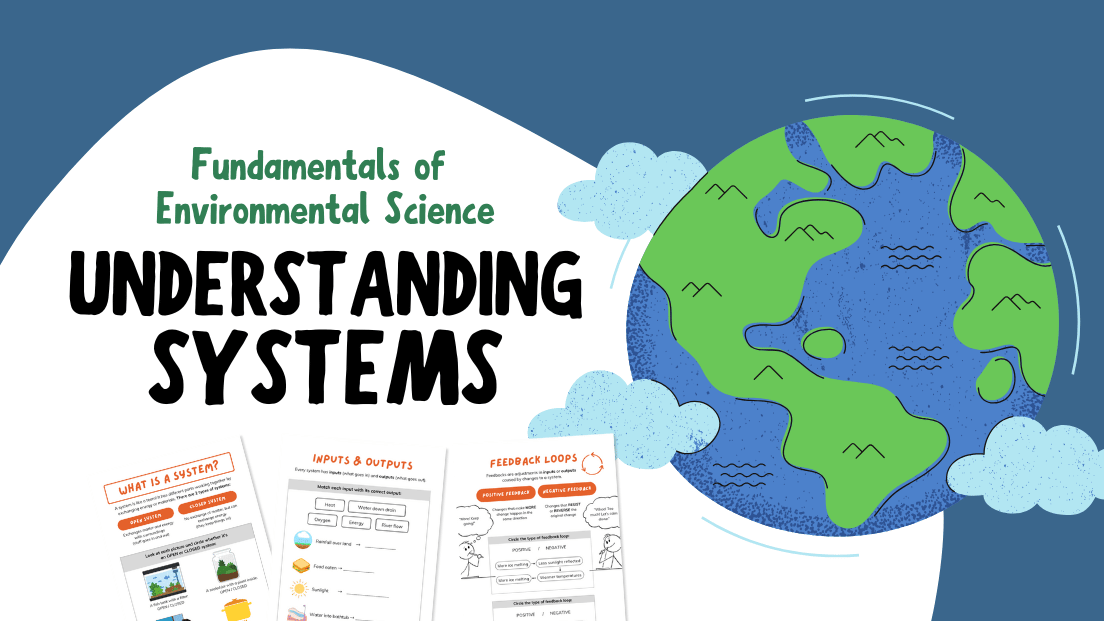Discover the Amazing Journey of Carbon!
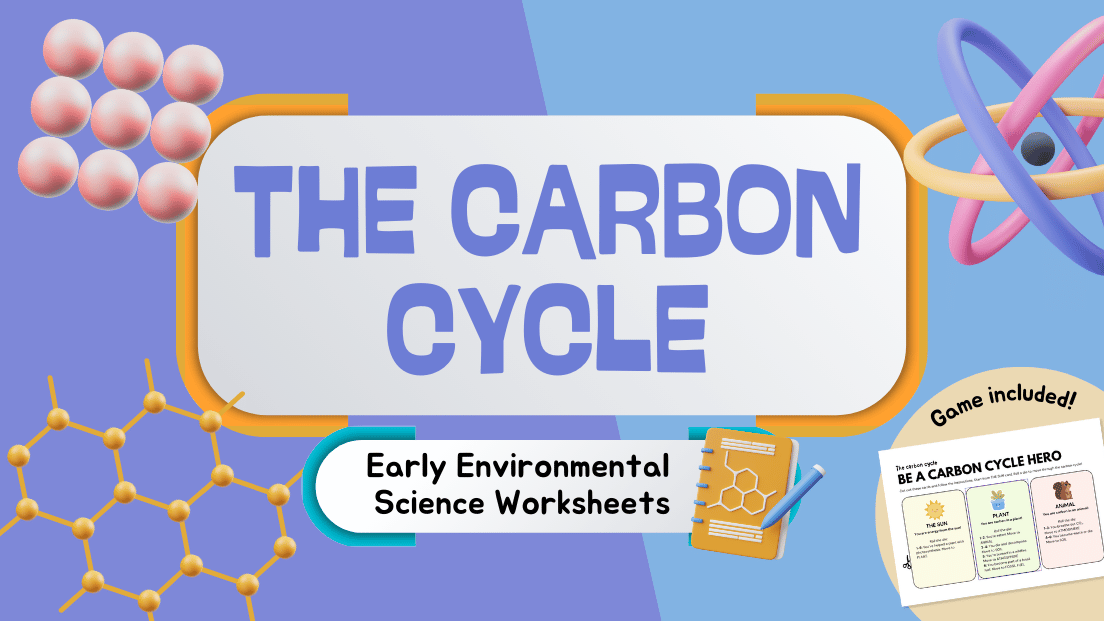
If you're a parent or teacher looking to introduce children to environmental science, this printable worksheet pack from CRAFTKI is the perfect way to make complex systems like the carbon cycle fun, visual, and easy to understand.
In this worksheet, kids will explore how carbon moves through our world—from plants and animals to the air we breathe—through engaging science-backed activities designed specifically for young learners. From “The 6 Carbon Superpowers” reading activity to labeling photosynthesis diagrams and playing the interactive Carbon Cycle Game, your child or student will build a solid foundation in environmental literacy and science process skills.
This downloadable PDF is a meaningful introduction to climate awareness, ecosystem thinking, and responsible living for a new generation of Earth advocates.
Objective
This comprehensive worksheet introduces children to the carbon cycle—the continuous movement of carbon through our environment. Through hands-on activities and visual learning experiences, students will discover the six main processes of the carbon cycle, understand how carbon moves between air, water, soil, and living things, and recognize how human activities affect this vital natural system—all while developing critical thinking skills and environmental stewardship.
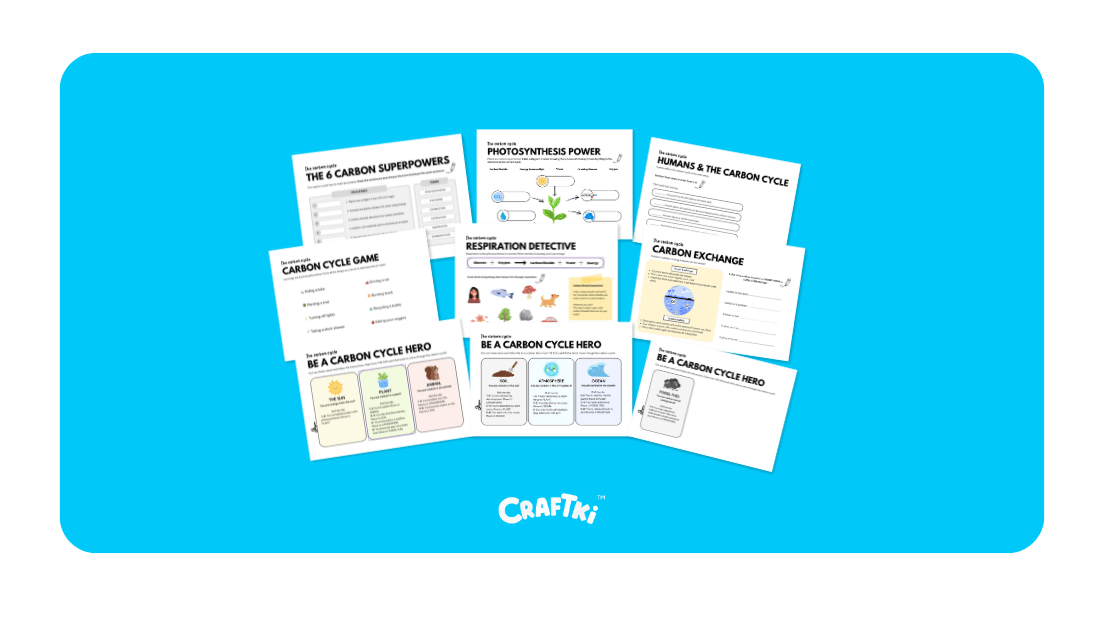
What Your Child/Student Will Learn
This comprehensive science worksheet is about connecting the dots between nature, science, and everyday life.
Here’s what your child or student will discover:
- Carbon Fundamentals: Understand why carbon is essential to all living things and how it moves through our environment
- Cycle Processes: Identify and understand the six key processes of the carbon cycle—photosynthesis, respiration, exchange, sedimentation, extraction, and combustion
- Chemical Reactions: Explore the basic chemical formulas for photosynthesis and respiration in an age-appropriate way
- Environmental Impact: Recognize how human activities like fossil fuel use and deforestation affect the carbon cycle
- Climate Connections: Understand the relationship between carbon dioxide, the atmosphere, and climate in a factual, non-frightening way
- Problem-Solving Skills: Develop critical thinking about environmental challenges and positive solutions
- Scientific Vocabulary: Master key carbon cycle terminology used by environmental scientists
- Systems Thinking: Understand the interconnectedness of Earth's natural cycles and processes
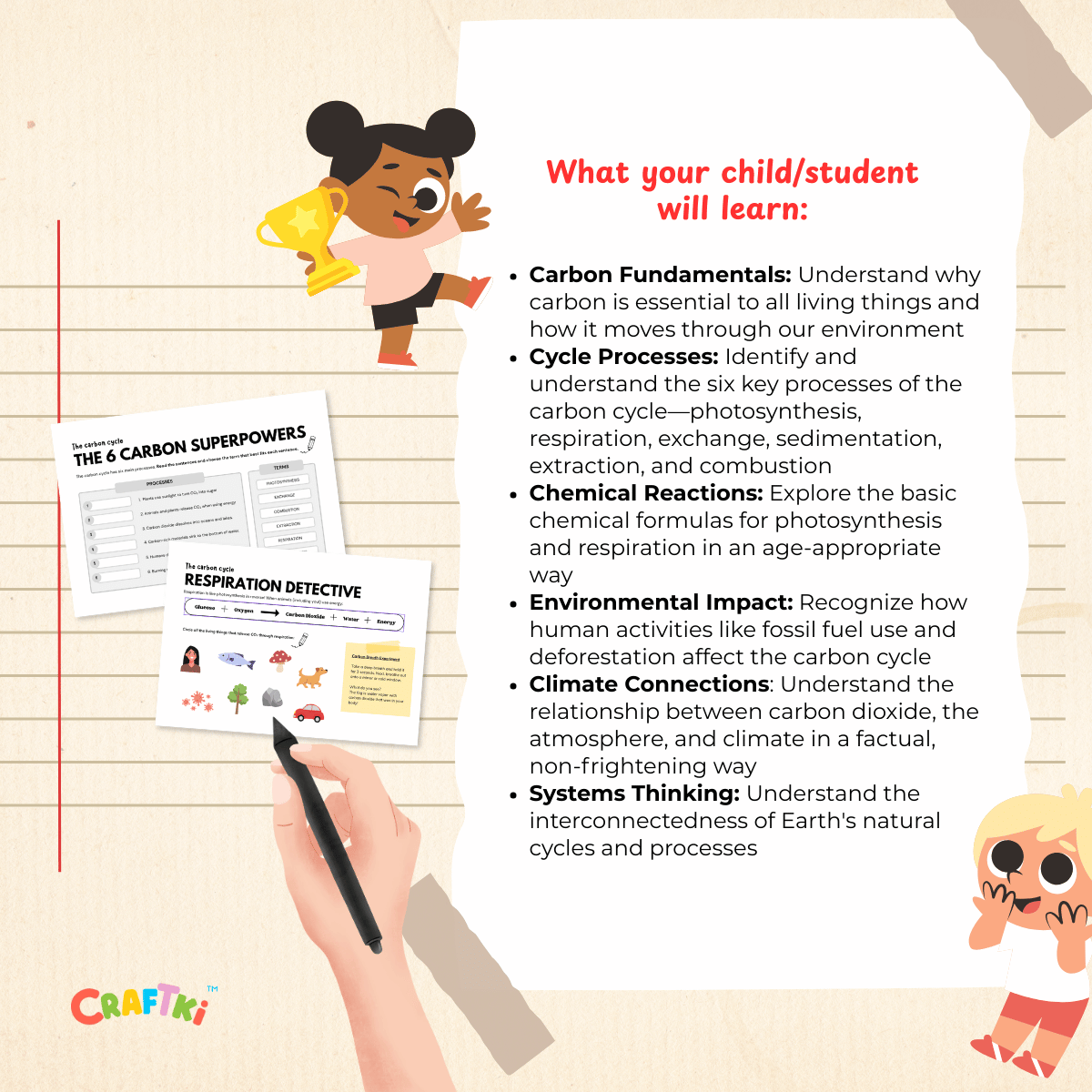
Recommended Supplementary Materials
To deepen learning, pair the worksheet with these child-friendly educational videos on YouTube. These curated videos align with science curriculum goals and help children visualize carbon processes.
YouTube Videos:
- Photosynthesis for Kids - Simple explanation of how plants use carbon
- Climate Change for Kids - Age-appropriate explanation of carbon's role in climate
- The simple story of photosynthesis and food - Amanda Ooten walks us through the process of photosynthesis, the relationship between photosynthesis and carbohydrates, starch, and fiber – and how the air we breathe is related to the food we ingest.
Helpful Links:
- NASA Climate Kids - The Carbon Cycle
- Carbon Cycle Interactive
- Plant Growth Experiments
- Carbon Footprint Calculator for Kids
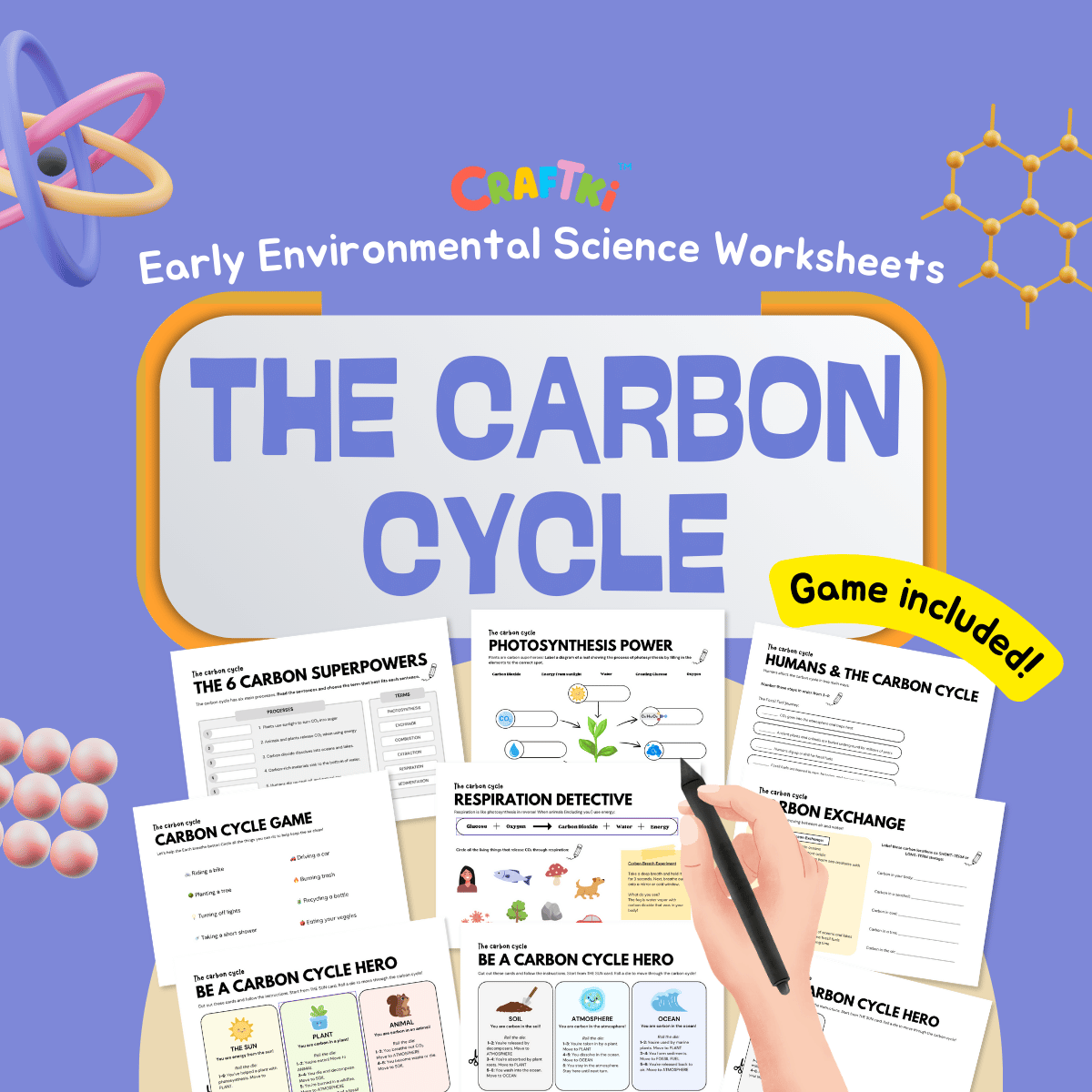
How To Get Started
Make the most out of this worksheet with this guided learning plan:
✅ Step 1: Warm-Up (5 mins)
Begin with a simple question:
“What do you think carbon is?”
Use a globe or a leaf to help children guess how nature "breathes."
✅ Step 2: The 6 Carbon Superpowers! (10 mins)
Children read six simplified sentences and choose the correct term:
- Carbon Dioxide, Photosynthesis, Respiration, etc.
This builds comprehension and vocabulary.
✅ Step 3: Label the Leaf Diagram (10 mins)
In this visual science activity, kids label the parts of a leaf and the movement of sunlight, CO₂, oxygen, and glucose during photosynthesis. They learn:
- Plants take in CO₂
- Use sunlight to make sugar (energy)
- Release oxygen back into the air
✅ Step 4: Circle Living Things That Breathe Out CO₂ (5 mins)
Children identify which living things release CO₂. This introduces respiration and reinforces the idea that carbon is constantly moving.
✅ Step 5: Carbon Exchange & Humans (5 mins)
Through simple prompts and visuals, children learn how carbon travels between land, ocean, and air. They also begin to understand:
- Human impact
- Carbon sinks (like forests and oceans)
- Fossil fuel emissions
✅ Step 6: Play the Carbon Cycle Game (10 mins)
Kids act as a carbon atom, rolling a die or using cards to travel between different parts of the carbon cycle. Each stop involves a short challenge or fact.
This gamified learning helps cement retention and makes abstract processes tangible.
✅ Step 7: Reflection Discussion (Optional)
Ask children:
- “What did you learn that surprised you?”
- “What can we do to protect the carbon cycle?”
For classroom settings, consider dividing students into teams representing different parts of the carbon cycle (plants, atmosphere, oceans, etc.) and have them act out carbon movements with a ball representing a carbon atom.
🗂️ Worksheet Preview Breakdown
Here’s a closer look at what’s inside the downloadable worksheet:
1. The 6 Carbon Superpowers
A reading-based activity with 6 fill-in-the-blank sentences to reinforce vocabulary and comprehension.
2. Photosynthesis Labeling Diagram
A clear diagram of a leaf with arrows pointing to “Sunlight”, “CO₂”, “O₂”, “Sugar”, and “Water”—kids match the words to their correct locations.
3. Respiration Activity
A fun visual sheet where kids circle all the living organisms that release CO₂ through breathing—yes, even fish!
4. Carbon Exchange Chart
Simple graphics explain how carbon moves between atmosphere, ocean, soil, and living things.
5. Humans & The Carbon Cycle
Learn about human's impact on the fossil fuel journey.
6. Carbon Cycle Game Board
Printable game path with “event” tiles, movement prompts, and quick facts for repeated play.
7. Carbon Cycle Summary
Summary of carbon facts and a glossary list of carbon cycle related vocabulary.
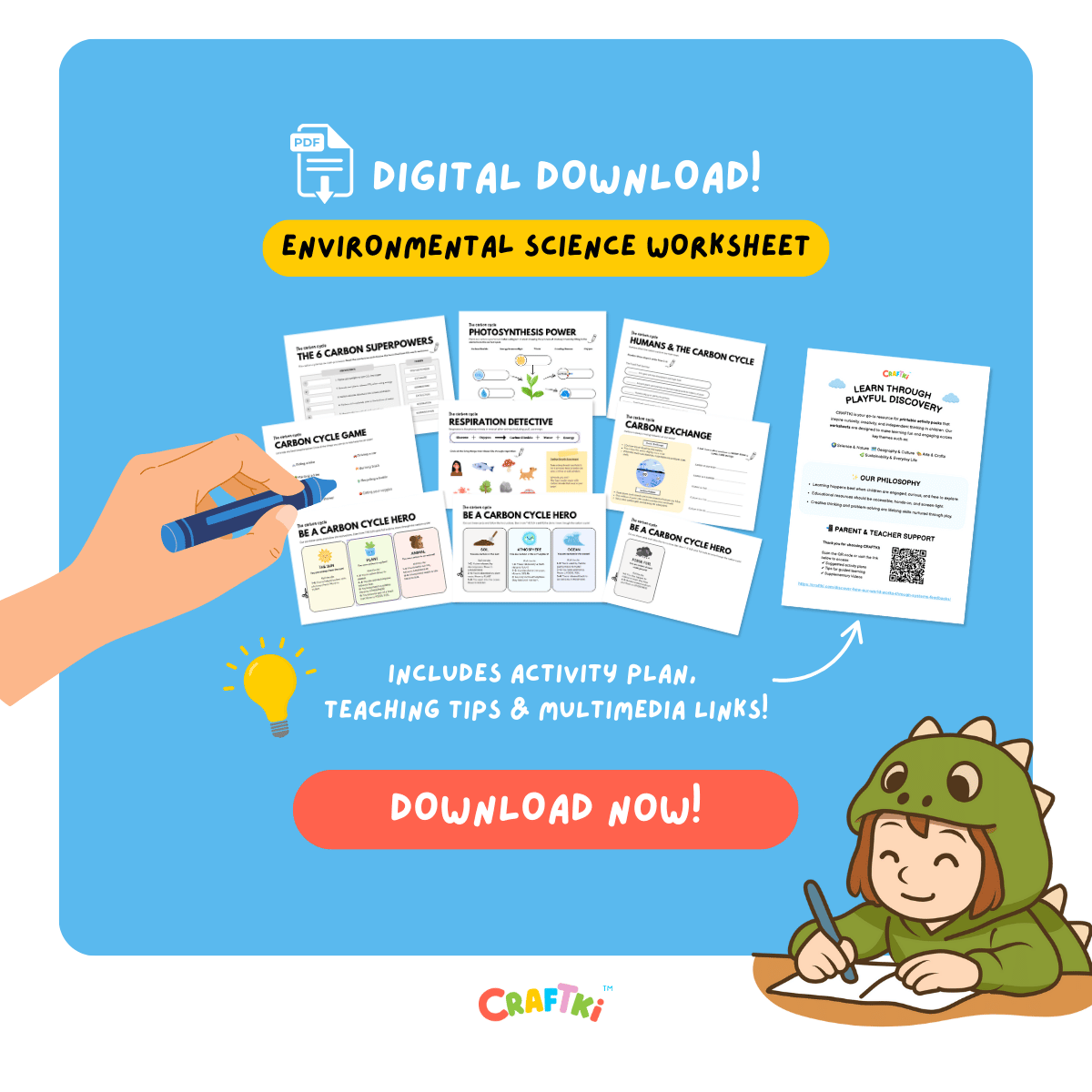
Join the Carbon Cycle Explorers!
Download our "Carbon Cycle " worksheet now and help young minds discover the incredible journey of carbon through our world! This isn't just a science lesson—it's an essential foundation for understanding environmental systems and developing positive solutions for our planet's future. Perfect for classroom instruction, homeschool science curriculum, nature clubs, or weekend enrichment activities, this worksheet makes complex carbon cycle concepts accessible and engaging for curious young scientists. Click below to begin!


